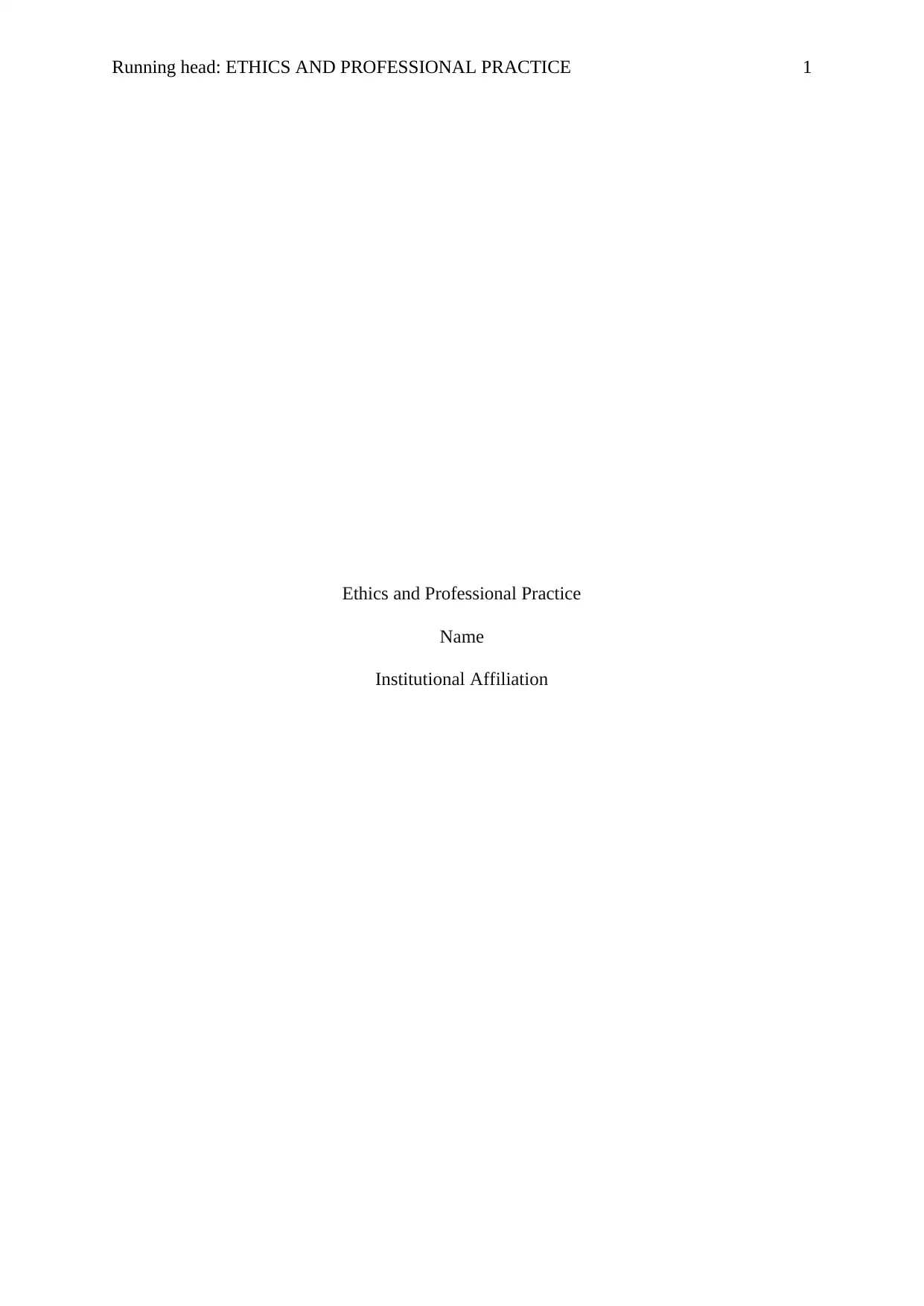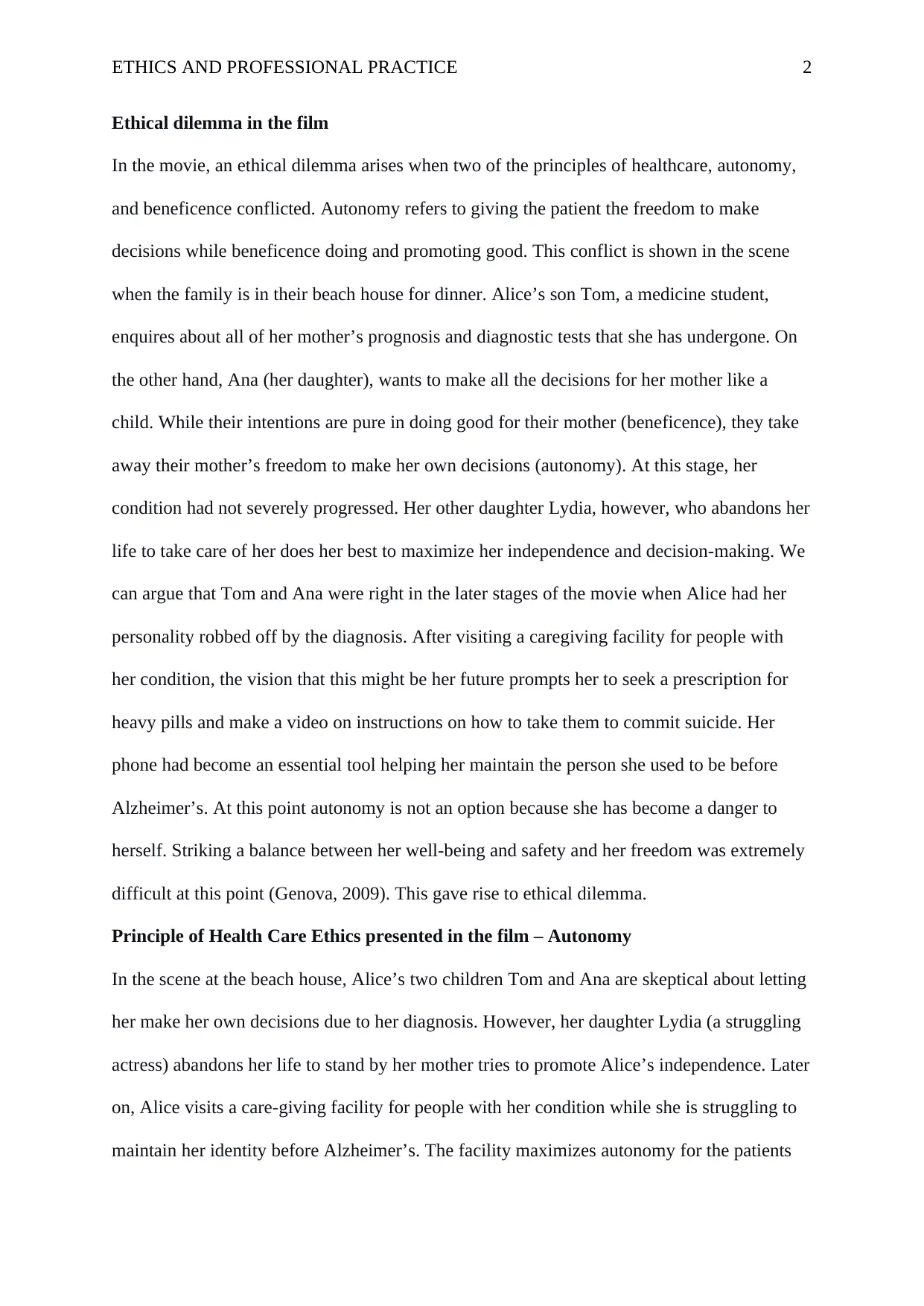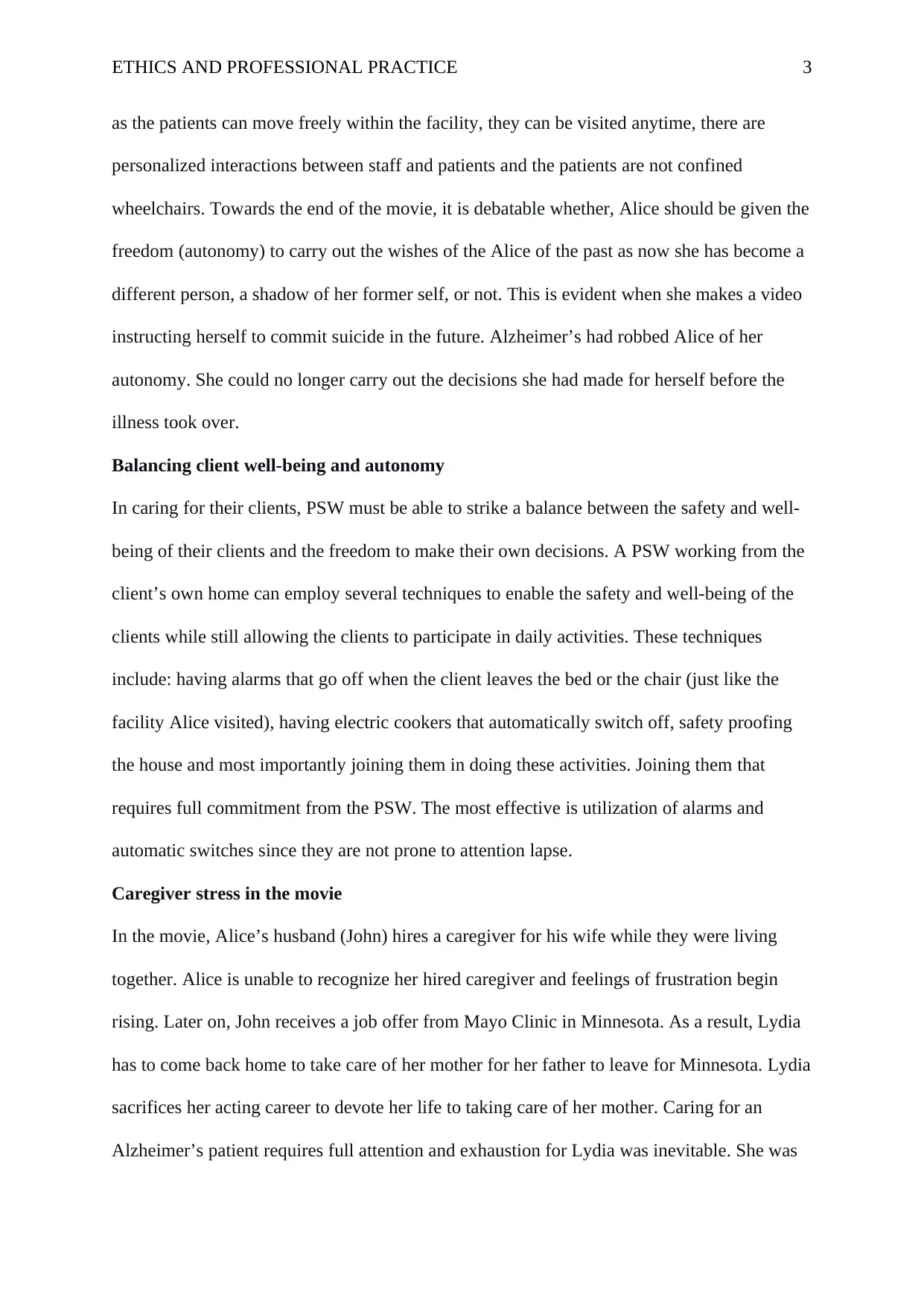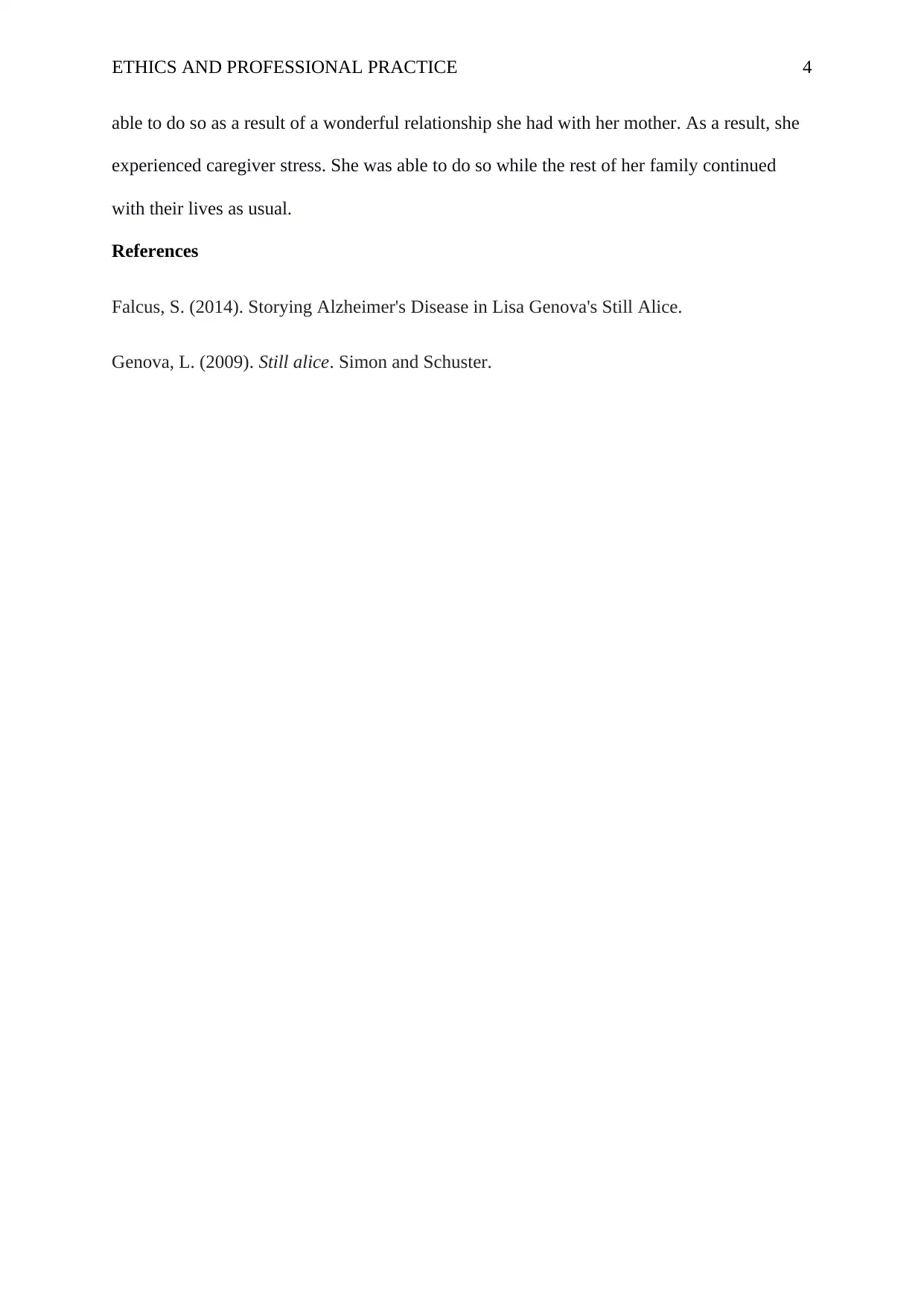Final Evaluation Assignment: Ethics and Caregiver Stress in Healthcare
VerifiedAdded on 2022/08/26
|4
|912
|29
Homework Assignment
AI Summary
This assignment analyzes the ethical dilemmas presented in the movie "Still Alice," focusing on the conflict between autonomy and beneficence in healthcare. The assignment explores a scene where Alice's children, Tom and Ana, struggle with allowing her to make her own decisions due to her Alzheimer's diagnosis, while her daughter Lydia supports her independence. The assignment discusses the representation of autonomy, caregiver stress, and the challenges faced by Personal Support Workers (PSWs) in balancing client well-being and autonomy. It also examines how caregiver stress is depicted in the movie, particularly through the experiences of Alice's husband and daughter Lydia, who sacrifices her career to care for her mother. The assignment references the principles of healthcare ethics and provides techniques for PSWs to ensure client safety and well-being while respecting their autonomy.
1 out of 4








![[object Object]](/_next/static/media/star-bottom.7253800d.svg)